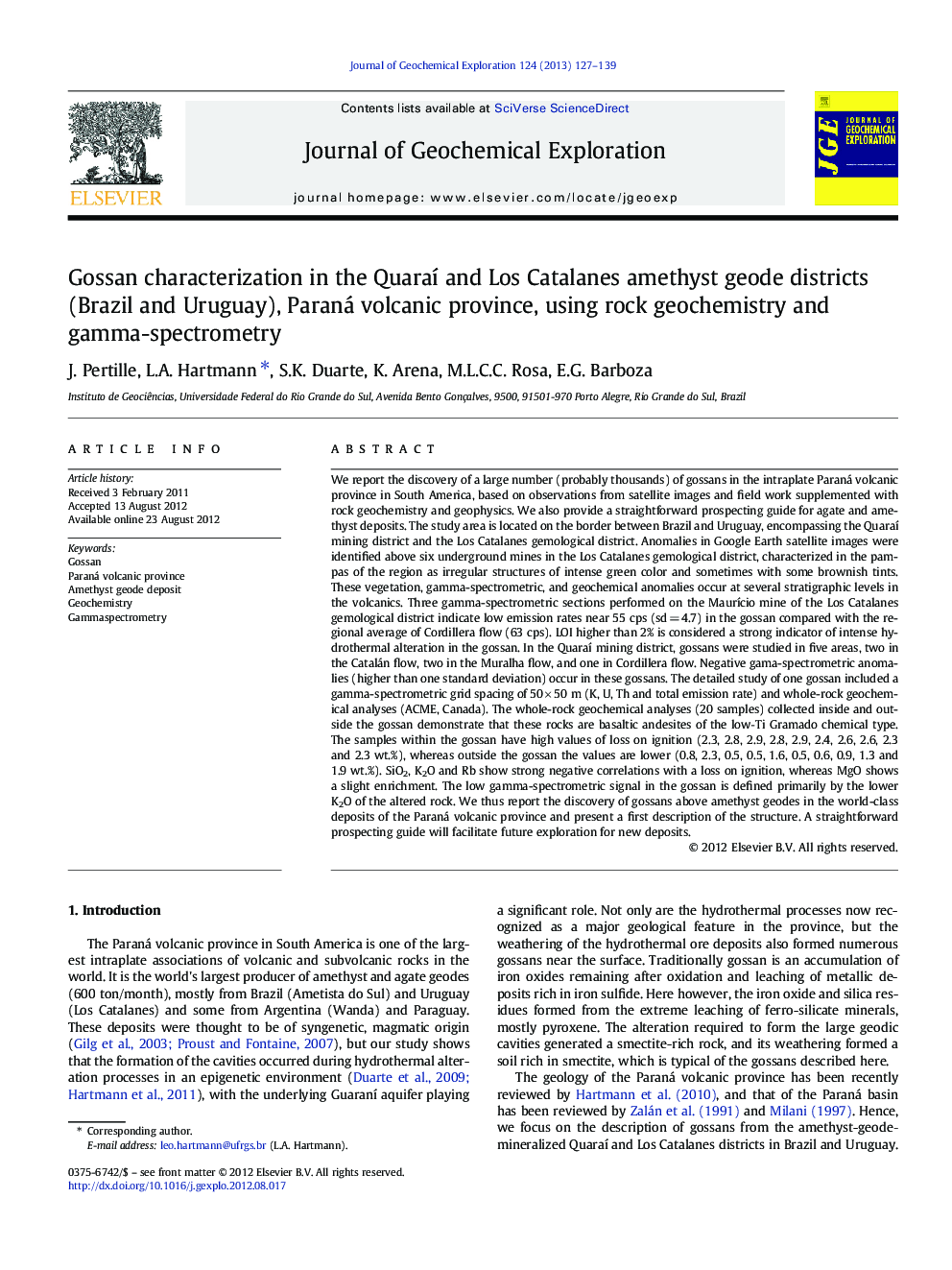| کد مقاله | کد نشریه | سال انتشار | مقاله انگلیسی | نسخه تمام متن |
|---|---|---|---|---|
| 4457686 | 1620932 | 2013 | 13 صفحه PDF | دانلود رایگان |

We report the discovery of a large number (probably thousands) of gossans in the intraplate Paraná volcanic province in South America, based on observations from satellite images and field work supplemented with rock geochemistry and geophysics. We also provide a straightforward prospecting guide for agate and amethyst deposits. The study area is located on the border between Brazil and Uruguay, encompassing the Quaraí mining district and the Los Catalanes gemological district. Anomalies in Google Earth satellite images were identified above six underground mines in the Los Catalanes gemological district, characterized in the pampas of the region as irregular structures of intense green color and sometimes with some brownish tints. These vegetation, gamma-spectrometric, and geochemical anomalies occur at several stratigraphic levels in the volcanics. Three gamma-spectrometric sections performed on the Maurício mine of the Los Catalanes gemological district indicate low emission rates near 55 cps (sd = 4.7) in the gossan compared with the regional average of Cordillera flow (63 cps). LOI higher than 2% is considered a strong indicator of intense hydrothermal alteration in the gossan. In the Quaraí mining district, gossans were studied in five areas, two in the Catalán flow, two in the Muralha flow, and one in Cordillera flow. Negative gama-spectrometric anomalies (higher than one standard deviation) occur in these gossans. The detailed study of one gossan included a gamma-spectrometric grid spacing of 50 × 50 m (K, U, Th and total emission rate) and whole-rock geochemical analyses (ACME, Canada). The whole-rock geochemical analyses (20 samples) collected inside and outside the gossan demonstrate that these rocks are basaltic andesites of the low‐Ti Gramado chemical type. The samples within the gossan have high values of loss on ignition (2.3, 2.8, 2.9, 2.8, 2.9, 2.4, 2.6, 2.6, 2.3 and 2.3 wt.%), whereas outside the gossan the values are lower (0.8, 2.3, 0.5, 0.5, 1.6, 0.5, 0.6, 0.9, 1.3 and 1.9 wt.%). SiO2, K2O and Rb show strong negative correlations with a loss on ignition, whereas MgO shows a slight enrichment. The low gamma-spectrometric signal in the gossan is defined primarily by the lower K2O of the altered rock. We thus report the discovery of gossans above amethyst geodes in the world-class deposits of the Paraná volcanic province and present a first description of the structure. A straightforward prospecting guide will facilitate future exploration for new deposits.
► Thousands of gossans over amethyst deposits in the Paraná volcanic province.
► The gossans are in the largest world producer of amethyst deposits.
► Rock geochemistry and scintillometry characterize the presence of gossans.
Journal: Journal of Geochemical Exploration - Volume 124, January 2013, Pages 127–139